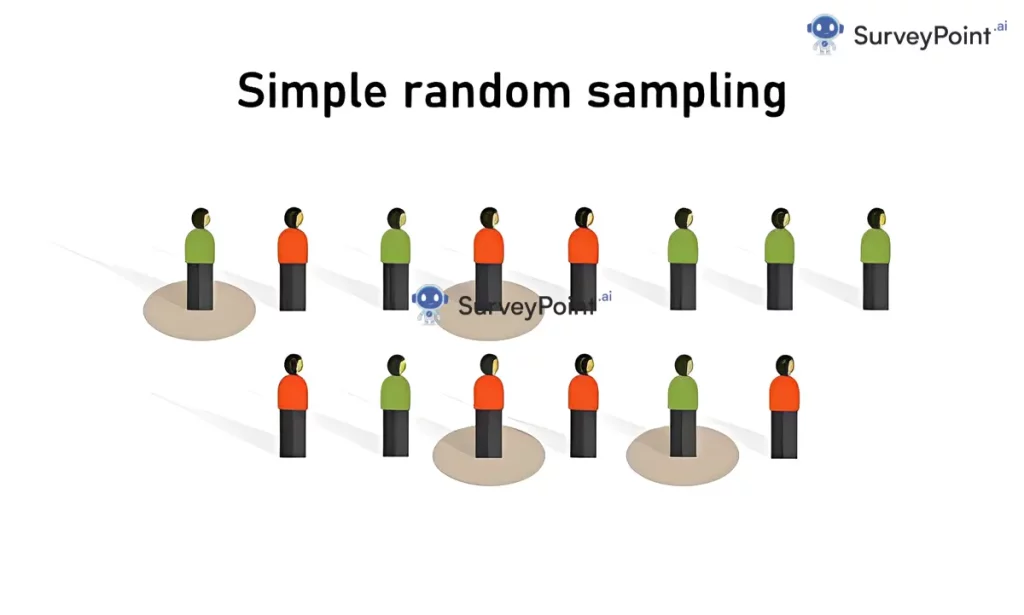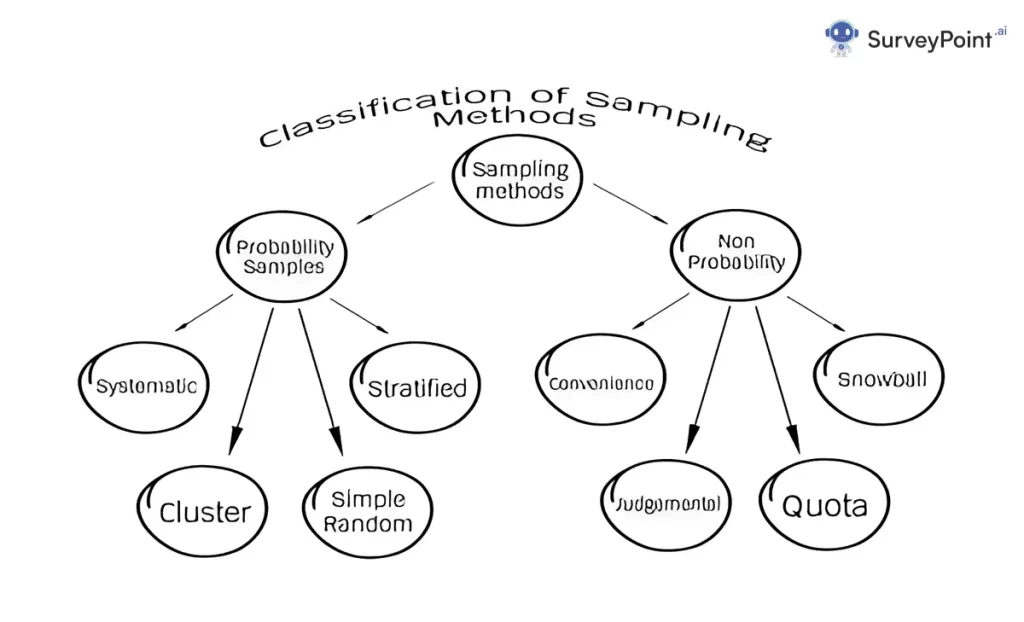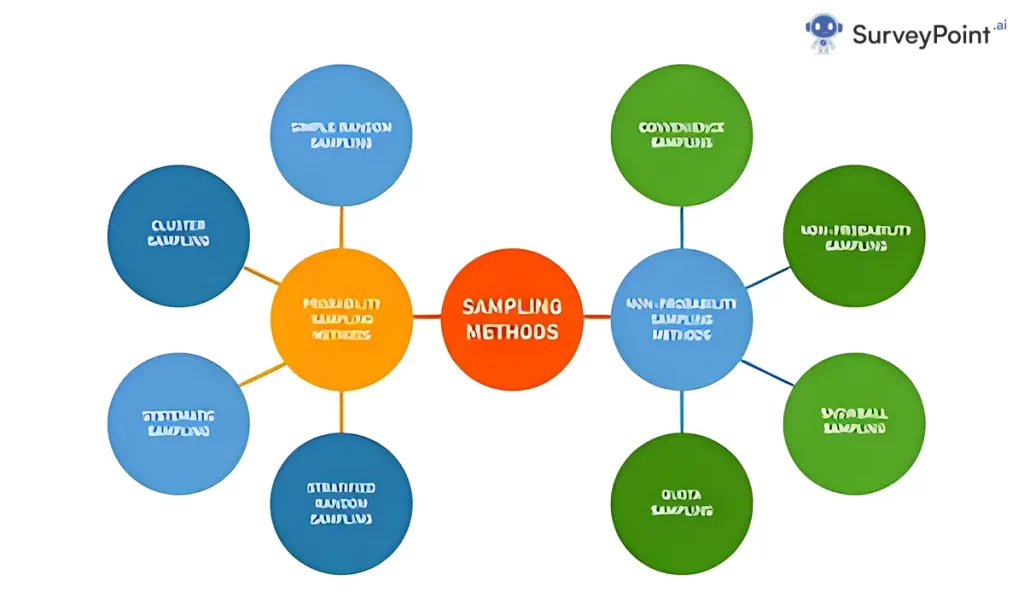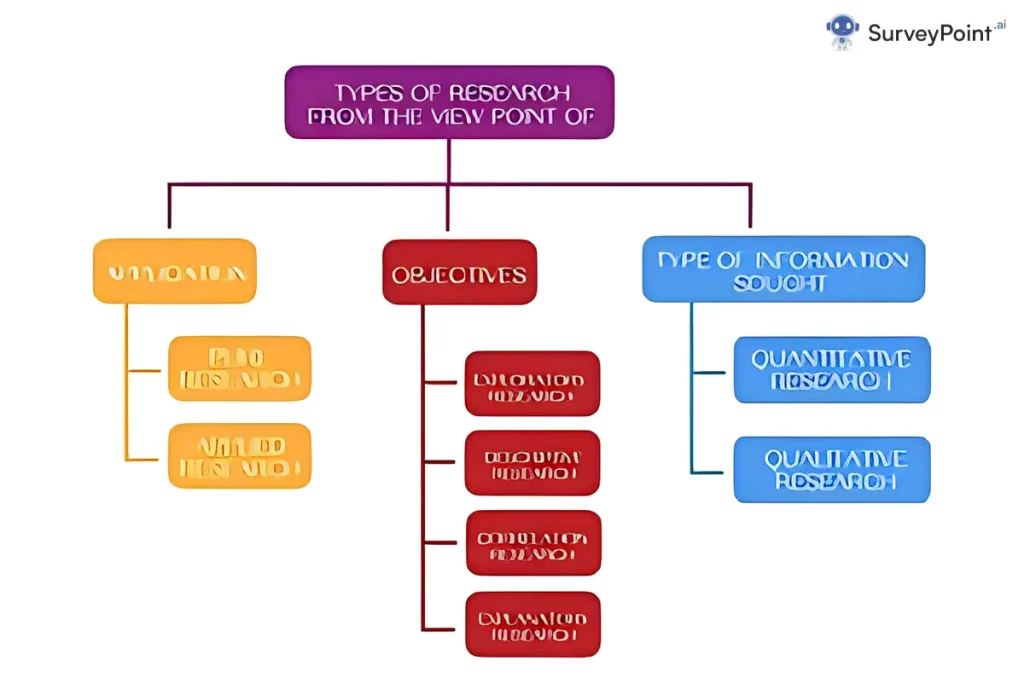

Explore the nuances in the Top 7 Differences Between Random and Non Random Sampling. Uncover key distinctions crucial for reliable data collection. Dive into this comprehensive guide for a profound understanding.
Have you ever wondered how researchers gather data to draw conclusions about a specific population? Sampling plays a crucial role in research, enabling scientists to study a subset of individuals instead of the entire population. Two commonly employed sampling methods are random sampling and non-random sampling. While both approaches have their merits, they differ in various aspects, influencing the outcomes and reliability of the gathered data. In this blog, we will the top seven differences between random and non random sampling, shedding light on their unique characteristics and implications.
Table of Contents

Random sampling involves selecting participants entirely by chance, ensuring that each member of the population has an equal likelihood of being chosen. This method eliminates biases and promotes objectivity, as it minimizes the researcher’s influence on the selection process. Simple random sampling, stratified random sampling, and cluster random sampling are common techniques under this category.
Contrary to random sampling, non-random sampling involves selecting participants based on specific criteria or convenience. Researchers intentionally choose individuals who are readily accessible or fit a particular profile. Convenience sampling, purposive sampling, and snowball sampling are a few examples of non-random sampling. This approach can be beneficial when access to the target population is limited or when specific characteristics are needed for the study.

Random sampling holds the advantage of ensuring representativeness. By giving each member of the population an equal chance of being selected, it eliminates potential biases and allows for inferences about the entire population. This method is particularly valuable when researching wide-ranging demographics or when the goal is to generalize findings to the larger population.
Non-random sampling might not always provide representative samples. Depending on the selection criteria, it can introduce biases that limit the generalizability of the findings. While this method may be suitable for exploratory research or when studying specific subgroups within a population, caution must be exercised when drawing conclusions about the larger population based on non-random samples alone.
Random sampling can be more time-consuming and resource-intensive compared to non-random sampling. The need to identify and contact potential participants from the entire population can be a lengthy process. Additionally, ensuring equal representation across different strata or clusters may require more resources.
Non-random sampling often offers greater time and resource efficiency. Researchers can quickly identify and recruit participants based on convenience or specific characteristics, saving both time and money. This method can be particularly useful in situations where researchers have limited time or resources available.
You Must Read The Valley of Despair Graph: 7 Tips to Help You Overcome It The Ultimate Guide to Sampling in Reports: Boosting Segmentation in 3 Simple Steps How to Explain Generation and Screening of Project Ideas in 10 Impactful Steps

Random sampling provides a higher degree of precision and accuracy. With equal chances of selection, the sample is more likely to reflect the true characteristics of the population. By minimizing biases, researchers can have more confidence in the findings and make more accurate inferences.
Non-random sampling may introduce errors and biases that affect the precision and accuracy of the results. Since participants are purposely selected based on certain criteria, the sample may not be truly representative of the population. Findings based on non-random samples should be interpreted with caution, as they may not accurately reflect the larger population.
Random sampling provides a solid foundation for making statistical inferences. The equal probability of selection allows researchers to apply statistical tests confidently and estimate parameters with greater accuracy. Inferences made with random samples tend to have a higher degree of reliability.
Non-random sampling can limit the applicability of statistical inferences. Since the sample selection is not entirely based on chance, it may not adhere to statistical assumptions required for certain analyses. Researchers should be cautious when generalizing findings based on non-random samples, as the validity of statistical inferences may be compromised.

Random sampling is generally considered more ethical as it ensures fairness and equal opportunity for all individuals in the population. By giving everyone an equal chance of participation, random sampling respects the rights and autonomy of potential participants.
Non-random sampling raises ethical concerns due to the potential biases it introduces. Researchers must be mindful of the selection criteria and how they may impact the rights and representation of different individuals in the population. Careful consideration and justification of the chosen sampling method are crucial to maintain ethical standards.
Random sampling enhances external validity by increasing the likelihood of generalizability. The representative nature of the sample allows for more confident conclusions about the larger population, improving the external validity of the research.
Non-random sampling may compromise external validity. The intentional selection of specific individuals or groups can limit the generalizability of findings. While non-random samples provide valuable insights into specific subpopulations, they might not accurately reflect the characteristics or behaviors of the larger population.
Can a Hybrid Approach Be Beneficial?
Certainly! Researchers often blend random and non-random elements to harness the strengths of both methods. This hybrid approach allows for targeted insights while maintaining an element of unpredictability.
How Does Non-Random Sampling Ensure Relevance?
Non-random sampling ensures relevance by focusing on specific criteria, aligning the study with particular traits or characteristics. This targeted approach enhances the applicability of findings to a defined context.
Does Random Sampling Guarantee Representative Results?
While it strives for representation, random sampling doesn’t offer a foolproof guarantee. Chance may lead to variations, but the approach aims to minimize biases and create a balanced reflection of the population.
What Challenges Come with Non-Random Sampling?
Non-random sampling may introduce biases if the criteria are not carefully chosen. Researchers must navigate the challenge of ensuring the selected sample truly represents the intended characteristics.
Is Random Sampling Time-Consuming?
Random sampling can be time-consuming, especially with large populations. However, its strength lies in providing an unbiased representation, justifying the investment.
How Does Non-Random Sampling Impact Resource Allocation?
Non-random sampling optimizes resource allocation by focusing efforts on specific criteria. This efficiency enables researchers to gather targeted insights without spreading resources thin.
Sampling methods play a vital role in research, influencing the quality and reliability of the gathered data. Random and non-random sampling differ in various aspects, including technique, representativeness, time efficiency, precision, statistical inferences, ethical considerations, and external validity. While random sampling offers representativeness, accuracy, and solid statistical foundations, non-random sampling provides time efficiency and flexibility. Researchers must carefully consider the strengths and limitations of each method to ensure the integrity and validity of their research. By understanding these Differences Between Random and Non Random Sampling, we can make informed decisions when selecting the most appropriate sampling approach for a particular study.
Sampling methods shape the very foundation of research, determining the reliability and accuracy of the insights we gather.